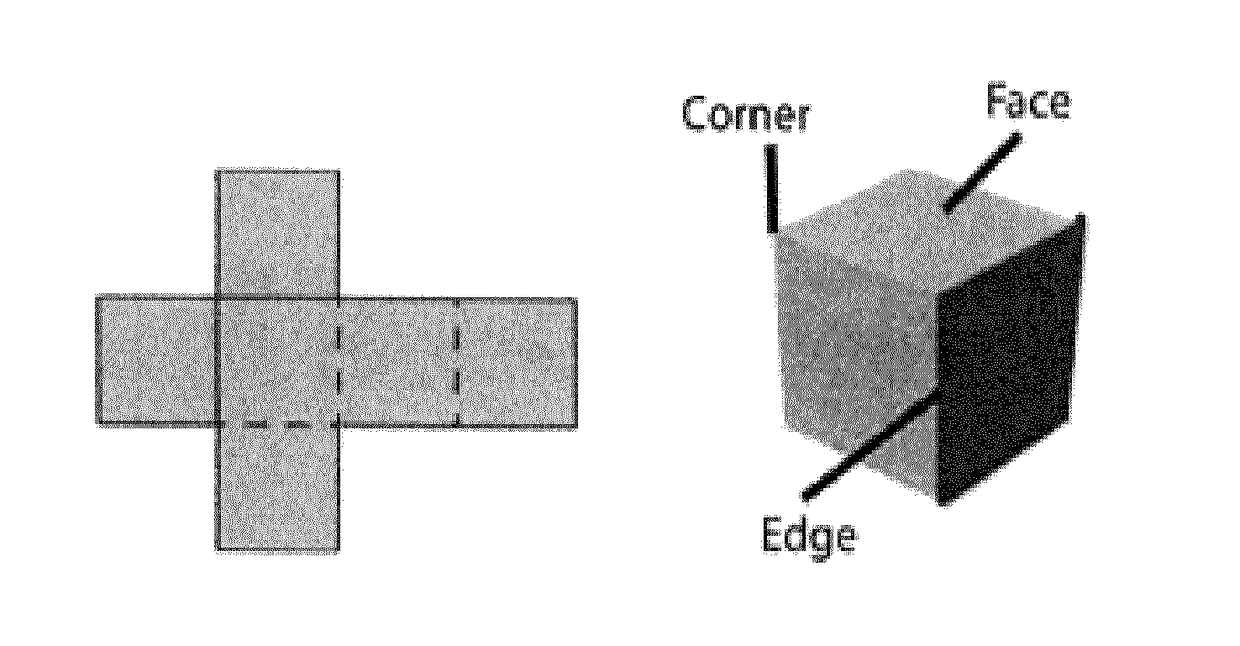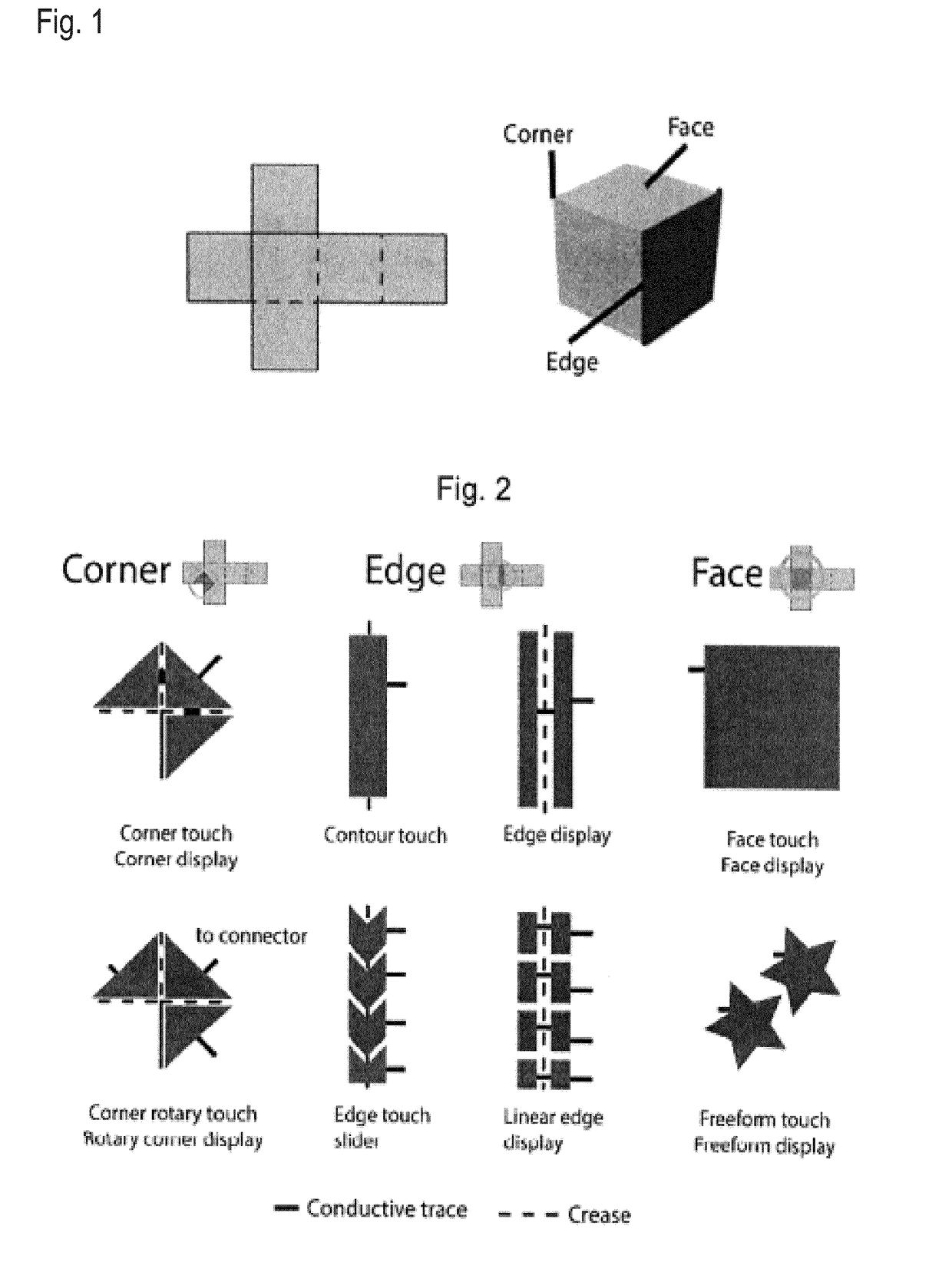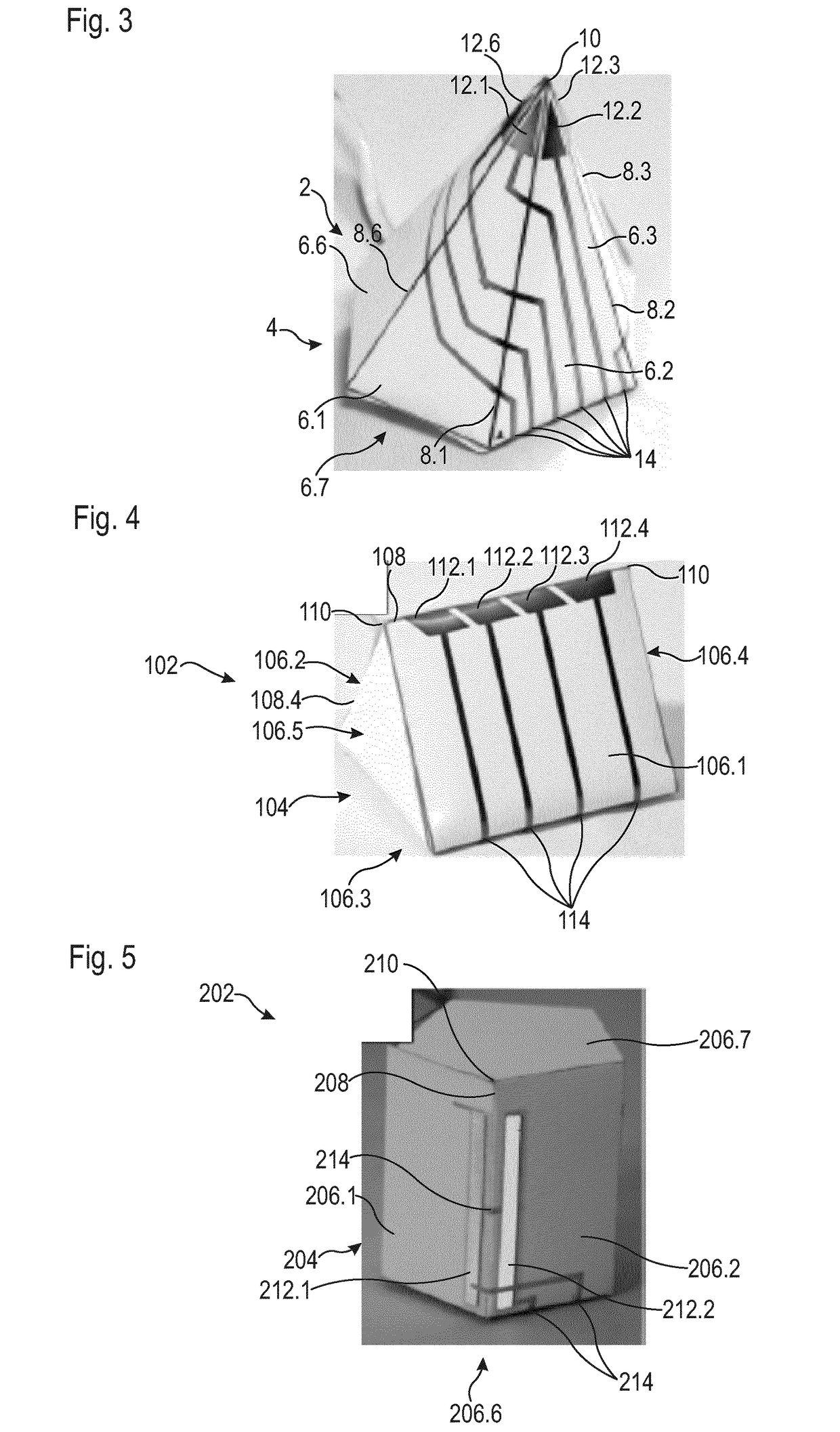Object Made of a Folded Sheet with Printed Electric Controls
a technology of printed electric controls and objects, applied in the direction of printed circuit aspects, folded pcb planar parts, image data processing, etc., can solve the problems of unstable self-folding, unreliable complex shapes, and high cost of smp layers, so as to achieve economic and intuitive fabrication pipeline, easy printing, and rapid
- Summary
- Abstract
- Description
- Claims
- Application Information
AI Technical Summary
Benefits of technology
Problems solved by technology
Method used
Image
Examples
first embodiment
[0042]FIG. 3 illustrates an interactive folded object according to the invention. The object 2 is made by folding a sheet 4 made for instance essentially of paper, being understood that other materials or material combinations are possible. The object 2 has general shape of a pyramid with a hexagonal base. It comprises six triangular faces 6.1 . . . 6.6, a base face 6.7, six fold edges 8.1 . . . 8.6 and a corner 10. The faces 6.4 and 6.5, as well as the edges 8.4 and 8.5 are not visible. The object 2 comprises functional areas 12.1 to 12.6 printed on the sheet 4 around the corner 10. These areas are for instance electrodes, i.e. electrically conductive areas. Each of these areas is separately electrically connected to a specific trace 14 for operating the resulting rotary touch control. In this FIG. 3, the electrodes 12.1 to 12.6 and electrically conductive traces 14 are illustrated on the outer side of the sheet 4 for the sake of illustration, these being advantageously on the inne...
fourth embodiment
[0054]The second part “Open Close” of FIG. 6 illustrates a second variant of the invention. The electrodes 312.1 and 312.2 of the shape sensing control are arranged on either sides of an edge 308 that forms an opening. This edge 308 is not a fold edge but well an edge where the face 306.1, upon folding, can move towards or away from the face 306.2. The shape sensing control forms then an open / close sensor.
[0055]The third part “Shearing” of FIG. 6 illustrates a third variant of the fourth embodiment of the invention. Shearing is sensed by three electrodes on the folded object 302. Two receiving electrodes 312.2 and 312.3 capture the signal of the transmitting electrode 312.1.
[0056]The fourth part “Linear Elongation” of FIG. 6 illustrates a fourth variant of the fourth embodiment of the invention. In that variant, the object is bellow folded and comprises at least one pair of transmitting and receiving electrodes 312.1 and 312.2 on either sides of a fold edge 308. For instance, the ob...
PUM
| Property | Measurement | Unit |
|---|---|---|
| distance | aaaaa | aaaaa |
| angles | aaaaa | aaaaa |
| distance | aaaaa | aaaaa |
Abstract
Description
Claims
Application Information
 Login to View More
Login to View More - R&D
- Intellectual Property
- Life Sciences
- Materials
- Tech Scout
- Unparalleled Data Quality
- Higher Quality Content
- 60% Fewer Hallucinations
Browse by: Latest US Patents, China's latest patents, Technical Efficacy Thesaurus, Application Domain, Technology Topic, Popular Technical Reports.
© 2025 PatSnap. All rights reserved.Legal|Privacy policy|Modern Slavery Act Transparency Statement|Sitemap|About US| Contact US: help@patsnap.com



